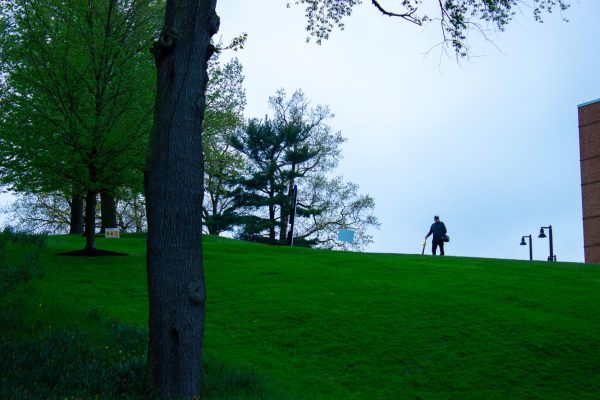At the height of the Vietnam War in 1970, America was divided into political camps that went beyond party lines. Students made up the bulk of anti-war protesters. Members of the older generations made up the pro-war Nixon supporters. There also existed working-class anti-war people, who simultaneously harbored resentment towards the anti-war student protesters, viewing them as privileged, ungrateful, or disrespectful towards the soldiers.¬Ý
While tens of thousands of American soldiers were dying in Vietnam, four American students were killed in their own country by the Ohio National Guard at Kent State University on May 4 1970 at an anti-war protest.
Now, over 50 years later, what would they say about how history has told their stories‚Äîand the uncanny similarities between then and now?¬Ý
That is the question Dr. Gregory Payne, Chair of Emerson‚Äôs Communication Studies Department, has been trying to answer for 55 years. As a college freshman in the Midwest when the Kent State massacre took place, the events of 1970 struck a chord with him, leaving him restless in the pursuit of answering the remaining ‚Äúwhys?‚Äù¬Ý
This past semester he enlisted the help of 18 Emerson students in his class, “The Killings at Kent State and Jackson State,” to help him find that answer.
Payne and his class embarked on a three-day trip to Kent, Ohio, for the 55th anniversary of the massacre and commemoration weekend. Payne and his students were joined by survivors of the shooting, relatives of victims, current and former Kent State students, and one devoted Emerson alum, Lee Schwebel, who was one of the first students to study the Kent State massacre under Payne, who also hails from the Kent, Ohio area. The weekend was rainy, as , Schwebel, the unofficial tour guide,¬Ý noted in a text message to the group‚Äî‚ÄúThe deluge is upon us‚Ķthe dreariness is wholly appropriate.‚Äù¬Ý
The area surrounding Kent is home to a diverse array of flora and fauna. On the drive from the Cleveland airport to Kent, wildflowers and dilapidated video stores decorate the windy country road our van traverses down. In the distance, mountain peaks dot the skyline before the van arrives in Downtown Kent, where antique stores, quaint train stations-turned-cafes, and old jazz bars line Main Street. The town appears frozen in time‚Äîthe perfect playground for a group of wayward Emerson students who love all things vintage, nostalgic for a time they weren‚Äôt even alive for.¬Ý
The group was introduced to Sophie Swengel, a junior history major at Kent State, and chair of the May 4 Task Force, a student-led organization focused on preserving the memory of May 4. Swengel said she first heard about the killings at Kent State as a middle schooler growing up in eastern Pennsylvania.“It just kind of stuck with me throughout my life,” Swengel said in an interview with the Beacon.
She talked about the struggles that living in the digital age presents as a student determined to preserve history and bear the burden of being the torch-bearer of May 4. However, she also noted the benefit of the accessibility and connection social media has brought her, namely, with like-minded Emerson students who take interest in Kent State, thanks to Payne.
“It’s so easy today for people to become isolated,” she said. “To be able to bring our history to another campus…to students who can empathize with and know the history of what people on our campus went through…I think that’s extremely powerful.”
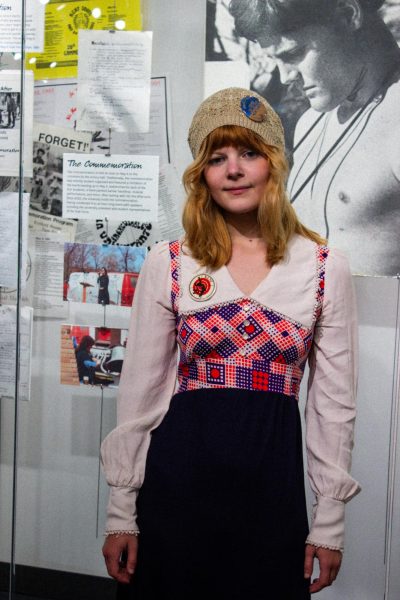
On Friday, a Deliberative Dialogue panel took place, hosted by Schwebel, Swengel, Emma Cudahy, and Payne. Deliberative Dialogues is a new initiative by the Department of Communication Studies at Emerson that seeks to bring diverse voices together to confront the political issues of today’s world. The panel represents a year’s work of “forging a cross-campus coalition” between Kent and Emerson, spearheaded by Swengel and Cudahy. Given that Emerson is the oldest communication school in the country, many Kent State community members, like Swengel and Grace, feel the partnership is vital, and Emerson is wholly fitting to keep the story of Kent State alive.
‚ÄúI find it so fascinating‚Ķhow history travels,‚Äù Swengel said of this partnership.¬Ý
Payne considers this for a moment, then says, “Telling the story of Kent is in my DNA.”
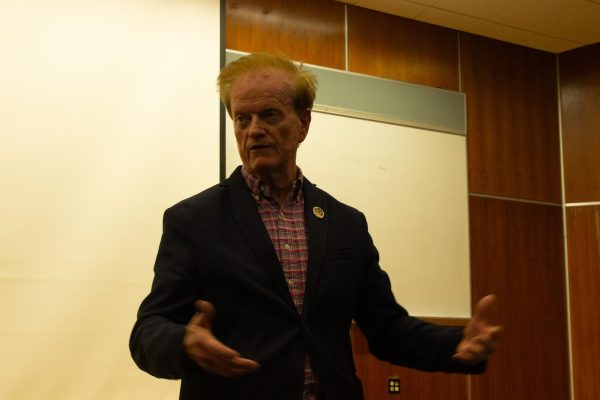
The panel continued to discuss the parallels between Emerson and Kent State—namely, the vibrant culture of student protest and counterculture present on both campuses.
‚ÄúHow lucky are we as students to be able to integrate these stories into our lives,‚Äù said Cudahy, who just graduated with a Bachelor‚Äôs Degree in Political Communication. ‚ÄúI can talk about Kent State in any of my classes at Emerson, even if they aren‚Äôt inherently political, the same way I can talk about Palestine in any of my classes, even if they‚Äôre not inherently political.‚Äù¬Ý
Last April, the Popular University Encampment for Gaza in the 2B Alley was formed to show solidarity with the pro-Palestine movement. This resulted in the arrest of 118 individuals. After a public records request made by the Beacon, body-cam footage shows the use of force against protestors, resulting in injuries on both sides.¬Ý
In an interview with the Beacon, Cudahy recalled the imagery from the night of April 25. Blood stained the bricks of the alley. Boston Police Department officers in riot gear with raw knuckles from confrontations with protestors.¬Ý
‚ÄúIf I had taken this class earlier, I wouldn‚Äôt have been so surprised,‚Äù Cudahy said of the encampment.¬Ý
The events of¬Ý May 4, 1970, culminated over the course of a weekend, beginning with the burying of the Constitution on May 1n. The following two nights, tensions ramped up, characterized by the broken windows of shops in Downtown Kent and the burning of the ROTC building, leading to Governor Bill Rhodes of Ohio calling the Ohio National Guard onto campus in preparation for a planned demonstration on May 4. During the protest, Guardsmen began escalating by using tear gas on students and weaponizing the bayonets on the ends of their guns.¬Ý
It was then that the protests found new meaning—students were not just protesting the war in Vietnam, but the National Guard’s presence on campus. Some, like former Students for Democratic Society member James Williamson, see the two causes as interconnected.
“The violence of the state, the violence of the military, the violence of the police, the violence of the American government…that’s what people were protesting,” said Williamson in an interview with the Beacon.
Faculty Marshall and Professor Glenn Frank, who many revered as a hero of May 4, got on a megaphone after the gunfire to tell remaining students to leave. In audio recordings kept from that day, his desperate plea echoes.
“I am begging you…If you don’t disperse right now, they’re going to move in, and it can only be a slaughter,” Frank said to the group of students on May 4.
They, of course, were the National Guard, who threatened to open fire once more if the students peacefully participating in a sit-in did not retreat back to their dorms. The campus closed for the rest of the semester after that, leaving students unsure where to go. No guardsmen were criminally charged for the massacre.¬Ý
Jennifer Mapes, PhD, an assistant professor in the department of geography at Kent State, held a lecture on Friday, May 2. She presented a collection of oral histories recounting May 4, 1970, as part of a lecture series held annually since 1990. She presented several oral testimonies, such as one from Janice Marie Wacko.
¬Ý‚ÄúMay 4 is like Passover for me, because everybody I loved survived,‚Äù Wacko said in an audio recording presented during the lecture series. Wacko lost her glasses in the chaos of the gunfire and relied on the people around her to usher her to safety.¬Ý
“The stronger we weave this fabric, the harder it is to break,” Mapes said. “Trauma surrounding May 4. is inextricably tied to our home, so we must embrace it.”
College students were not the only ones protesting that year. In a panel hosted by David Paul Kuhn, author of “The Hard Hat Riots,” which details the day construction workers rallied against student protesters in New York City, the underlying class conflict was highlighted. This conflict was present not just in the protests, but true to the war itself—many of the young boys drafted came from working-class backgrounds, unable to evade the draft like their wealthier counterparts, who were exempted by way of being college students, or knowing the right people.
‚ÄúAmerica did not see themselves in those white kids,‚Äù Kuhn said, referring to the angst many Americans felt towards white college students at prestigious institutions protesting a war they never had to fear being drafted into.¬Ý
Kent State is a state school in Ohio, most of its students come from blue-collar families from the coal mines of Akron or the foothills of Allegheny. Kent State has long touted itself as a home to students from working-class families—a fact that hasn’t changed. As of Fall 2024, 34% of Kent State students were first-generation. 8.8% of students came from families who made $20,000 or less a year, putting them in the bottom 20% of income. At Kent State, tuition for Ohio residents is roughly $13,000 a year, and $22,000 for out-of-state residents.
Thomas Grace, a gunshot wound survivor from the shooting, took the stage after Kuhn to address the shortcomings of the book, noting not just the demographics of Kent State that weren‚Äôt represented, but how the public perception of the ’70s student protests has changed.¬Ý
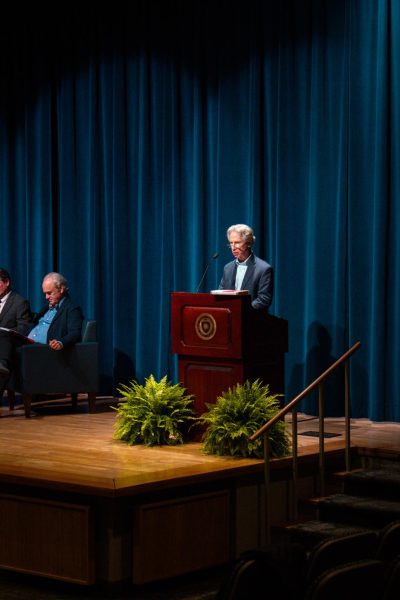
The Hard Hat riots represented something much greater than a divided stance on the Vietnam War. After seeing the conflict between working-class men and student protestors, Nixon‚Äôs Republican party took the opportunity to realign and began pandering more to the former population. This gave birth to the ‚ÄúSouthern Strategy,‚Äù a way to attract blue-collar, former Democrats, mostly in the South, to a new conservative ideology. No one thought labor and the left would turn on each other, according to Kuhn, but during Vietnam, they did. As such, Roosevelt‚Äôs New Deal coalition was fractured, and the GOP became the party of the working class.¬Ý
Kuhn said the Hard Hat riots of 1970 gave way to the Capitol insurrection by Trump supporters on January 6th, 2021‚Äîthat, without the growing defiance against anti-war sentiment within the working class sect of the United States, a blue collar coalition within the GOP never would‚Äôve been built, bringing populism into the mainstream.¬Ý
Afterwards, Payne’s group walked to a lecture hall to rehearse excerpts from “Kent State: A Requiem,” a play Payne wrote, first performed in 1976. A text that represents collective grief now has life breathed into it by a spirited group of communication studies students. From the audience, Payne, proving himself to be both a rhetorician and a thespian, directed the students via hand gestures akin to a maestro’s.
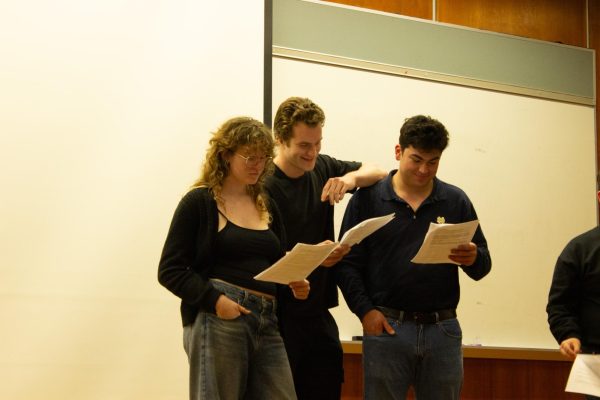
After the performance concluded, audience members were invited to give feedback and ask questions.¬Ý
“I’ve never been to [Kent State], but in some crazy kind of way, it feels like coming home to me,” said Mark Brodie, who was joined on the trip by four students to work on a documentary about the weekend through the Common Collective, which is a student-led organization at Emerson that uses multimedia communication to tell stories.
Many influential figures that emerged from May 4 sat in the audience, including Chic Canfora, a survivor of May 4, Russ Miller, brother of victim Jeff Miller, and Pulitzer-Prize winning photographer John Filo, who captured in eternity the moment a young Mary Ann Vecchio found Miller‚Äôs body. All had seen the play before, with Miller‚Äôs brother noting, ‚ÄúIt was a roller coaster,‚Äù to see it for the first time, but he ‚Äúwouldn‚Äôt miss it for the world.‚Äù¬Ý
The next day, May 3, began with a guided walking tour of the site of the massacre by Filo. He highlighted the way public perception has changed, not just of student protestors, but student journalists too.¬Ý
‚ÄúWhen I was behind the camera, I felt bulletproof. Nowadays, it‚Äôs like, ‚Äòshoot me first‚Äô…[because] you‚Äôre the bearer of the truth,‚Äù Filo said.
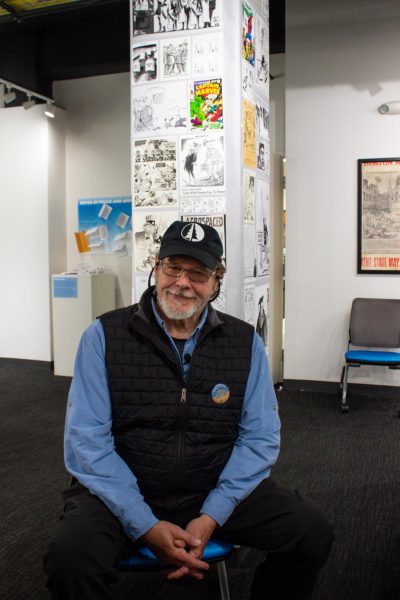
Filo and the group then went to a workshop led by Jennifer Schwartz, cousin of Alison Krause, victim of the May 4 killings, where attendees were invited to make lanterns for the vigil that night.
‚ÄúI kind of grew up in the shadow of May 4‚Ķ[Krause] has been a mentor for me, even though she‚Äôs not in the flesh,‚Äù Schwartz said in an interview with The Beacon.¬Ý
“Her legacy is peace, strength, and justice, and at the heart of that was love.”
Schwartz told her favorite story about her cousin that she had heard growing up. Krause volunteered at a local home for disabled adults, making crafts and playing basketball with them. There was one adult she worked particularly hard to foster a relationship with, who was non-verbal. After months of spending time with him, he broke his silence for the first time while talking to Krause.
‚ÄúFor me, hearing that as a young person, [made me want] to help people,‚Äù Schwartz said. She now works as an Art Therapist at Ursuline College in Ohio, where she works in mixed media to teach stress management and emotional regulation to college students.¬Ý
‚ÄúOne of the things I love about teaching is working with young people the age my cousin was when she was killed‚Ķthey want to make a difference,‚Äù she said.¬Ý
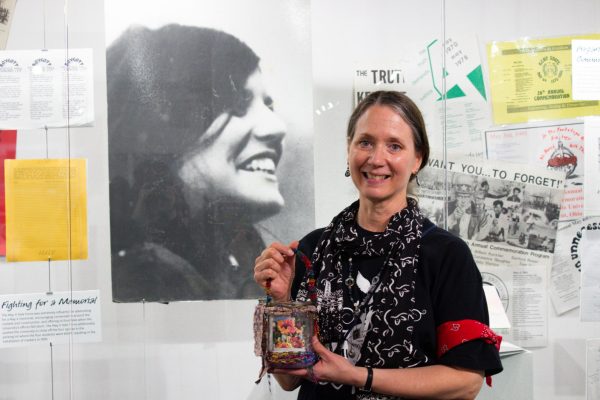
The May 4 Visitor’s Center sat next door to the workshop. While looking through pictures and artifacts of youth protest and counterculture in the 60s and 70s, Payne said, “Each time we come here, we run into someone who has a new story…That’s what Emerson’s been doing since 1880. Telling stories.”
His passion for both Kent State and Emerson shines through, and complement one another like the pictures in the gallery—Kent State the picture, and Emerson the frame. He calls this relationship “a testimony to not just the protest of the past, but the advocacy of today.”
‚ÄúKent State isn‚Äôt about today. It‚Äôs about tomorrow,‚Äù Payne said. ‚ÄúIt doesn‚Äôt end here, this is just the beginning.‚Äù¬Ý
In the fall, Payne will host a Deliberative Dialogue with Swengel, Schwebel, Canfora, Filo, and Vecchio to further the connection between Emerson and Kent State.¬Ý¬Ý
Following the tour of the Visitor’s Center, the group went to a screening of the documentary “Fire in the Heartland,” written and directed by Miller. In the documentary, Canfora sat down for an interview and shared the perspective she’s gained in the years following surviving the massacre.
‚ÄúWhen Kent State students speak, the world listens,‚Äù she said. ‚ÄúCollege students are the conscience of America.‚Äù¬Ý
The same night, the May 4 Task Force led a group of hundreds in a candlelight vigil, traipsing the perimeter of the campus in the aforementioned ‚Äúdeluge‚Äù and across uneven terrain.¬Ý
It ended at the site of the massacre, with light posts lining the silhouette of their fallen figures, hindering a car from parking there ever again. Swengel, in her knit beret, stood between the light posts marking Krause‚Äôs place in the lot. She closed her eyes and clutched her lantern‚Äîan act that Payne noted is often frowned upon, but Swengel gets an exception; she‚Äôs earned it.¬Ý
On the last day of the trip, May 4, Schwhebel hosted a luncheon with survivors, current Kent State students, and Emersonians. When invited to share their takeaways from the trip, Payne’s students expressed gratitude for the experience.
“You don’t feel…the reality of what happened until you’re immersed in it,” said junior Sports Communications student Asher Gardiner.
The official anniversary commemoration, the keynote event, began in the Commons just yards from where four students fell dead. Walking down the hill, almost sixty thousand daffodils decorate the hill to represent the American soldiers who died in Vietnam. Before the official event started, Jim and Eroc Classic Rock duo, a local tribute band, played songs that hark the Vietnam war era—namely, “Ohio” by Crosby, Stills, Nash, and Young, written just two weeks after the killings, and “Wish You Were Here” by Pink Floyd, which in this moment, sings as an obituary for the four students lost.
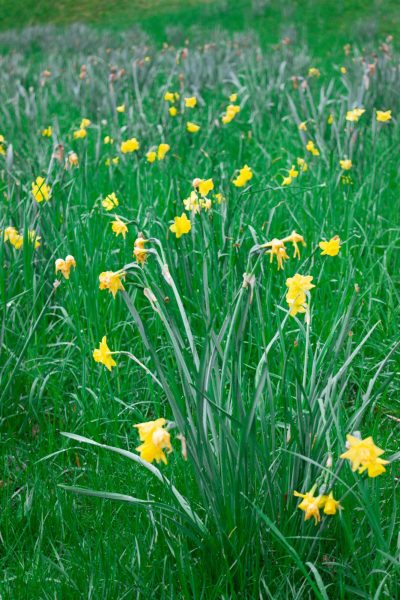
At noon, survivor John Cleary rings The Victory Bell, which also rang on this day fifty-five years ago.
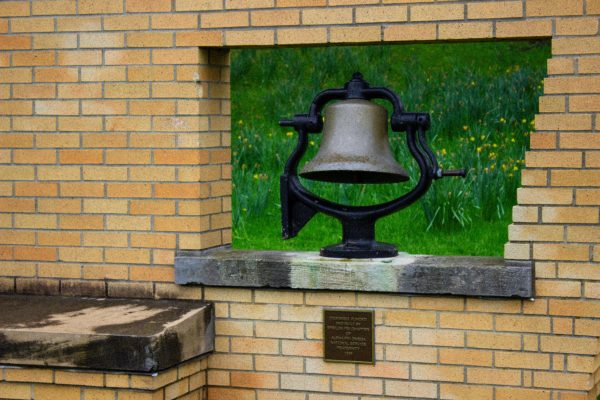
A video played of Florence Shroeder, mother of victim Bill, speaking at the commemoration in 1990. She read a poem that Bill gave her for Mother’s Day before his death. He wrote:
“Learning something from the past is of prime consideration.”
Canfora’s brother Alan, who died in 2020 after surviving a bullet to the wrist in 1970, formed the May 4 Task Force fifty years ago, along with two other survivors.
‚ÄúFor fifty years, [it] has been the student-led voice for remembrance,‚Äù she said, calling the students of the task force today ‚Äústalwart.‚Äù¬Ý
Now, Ohio‚Äôs Senate Bill One, or the Advance Higher Education Act, soon goes into effect. The bill dramatically impacts higher education, namely, by banning practices of diversity, equity, and inclusion. According to Julian Grimes, President of the KSU Black United Students, such legislation threatens the sanctity of student protest and free speech.¬Ý
“This is threatening to erase everything we’ve fought for,” he said. “If we do not speak up and organize and act now, we will lose everything our ancestors bled for.”
After the commemoration, Payne’s class and “compatriots,” as he affectionately calls them, piled into Schwebel’s rented van to head back to the Cleveland airport. Before leaving the Visitor’s Center, Grace left us with the following sentiment.
“Emerson is now a part of the Kent State story.”
